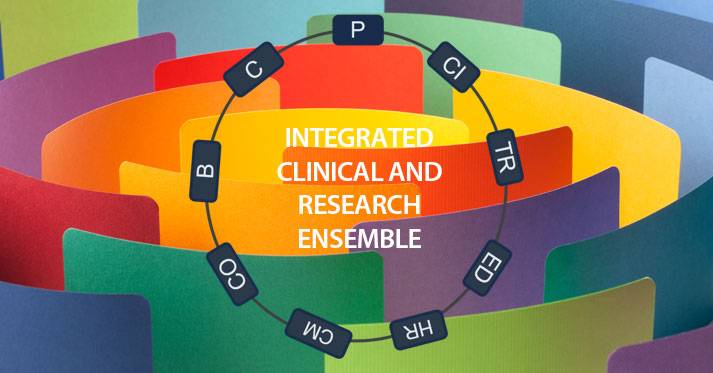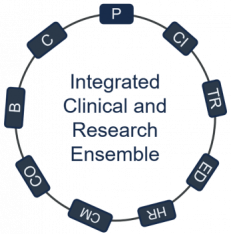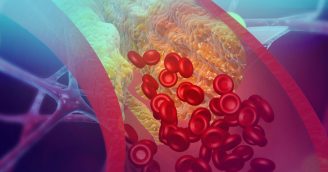
02 Dec Team Science-Guided Integrated Clinical & Research Ensembles: a New Approach
This summer, CTSI rolled out a program to accelerate the translation of research into the clinic and community through a novel concept referred to as the “Ensemble.” This innovative never-before-done approach uses team-science principles to bring together a broad continuum of stakeholders, including participants of the biomedical research enterprise, community members/patients, and healthcare delivery that are known to be historically siloed in-order-to address unmet diagnostic and therapeutic patient needs.
Ensemble: Inclusive Membership
Ensembles are groups formed with the deliberate intentional goal to include participants who are rarely invited to contribute in research planning. For example, Ensemble members might include patients, community advocates, community representatives, hospital system representatives, clinicians, clinical investigators, basic scientists, translational scientists, population scientists, or community health experts. This design allows for identification of real unsolved patient care problems and provides the opportunity for the Ensemble members to develop a solution to these unmet shortcomings.

P – Patient
CI – Clinical Investigator
TR – Translational Researcher
ED – Enabling Discipline Researcher
HR – Health System / Hospital Representative
CM – Community Member
CO – Community / Population Health Researcher
B – Basic Science Researcher
C – Clinician
Different Approach
The Ensembles meet regularly and develop a list of unsolved patient problems, potential barriers, and necessary expertise that would be critical to addressing the unmet medical need. In these meetings, members discuss their individual research interests and develop ideas for how to complement each other’s strengths to meet the unmet diagnostic and therapeutic need through research and discovery.
Ensemble Products
Over the course of several meetings, the Ensemble discussions eventually focus on ideas for ensemble “products” e.g. a solution to a real patient care problem which could be the development of a device, medication, clinical trial, public health plan, research grant, etc. Through ongoing discussions, a proposal is developed for evaluation by a CTSI Ensemble Review Committee. Approved Ensembles receive a $50,000 line of credit and future funding through CTSI pilot grants. They will also receive project management support.
Ensemble Evolution – Adaptable Platform for Collaboration
Approved ensembles continue to enjoy the flexibility to evolve and change direction as they meet regularly to introduce new concerns, new research resources, and facilitate inclusion of new members with complementary research interests and expertise as patient diagnostic or therapeutic needs demand.
New Ideas in Progress
The ensemble concept has been met with much excitement and a rush of ideas. In less than 6 months 14 ideas for Ensembles have been brought to CTSI and 10 ensembles involving over 60 medical professionals from 20 departments are meeting regularly to develop proposals. Topics to name a few include fecal incontinence, cancer survivorship, obesity, cardio-oncology, and bioethics. Ensembles participants are primarily from the Milwaukee area, but also include professional resources throughout the country and internationally.
If you have an idea for forming an ensemble please contact Sr. Project Managers Mike Anello manello@mcw.edu or David Zimmerman MBA, MPA at dzimmerman@mcw.edu.











